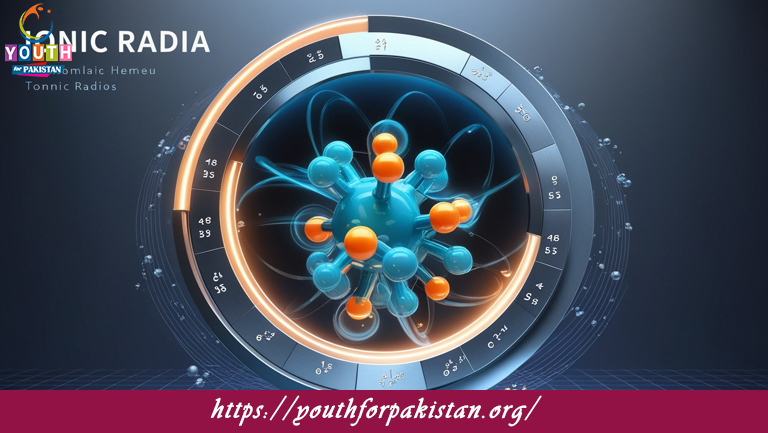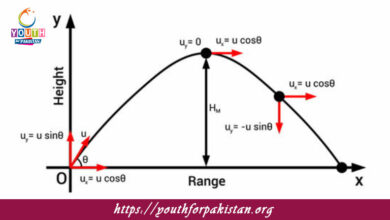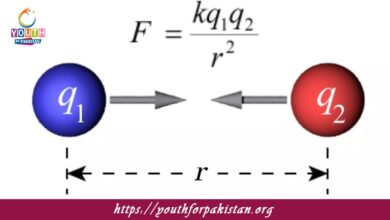Ionic Radii MDCAT MCQs with Answers

Welcome to the Ionic Radii MDCAT MCQs with Answers. In this post, we have shared Ionic Radii Multiple Choice Questions and Answers for PMC MDCAT 2024. Each question in MDCAT Chemistry offers a chance to enhance your knowledge regarding Ionic Radii MCQs in this MDCAT Online Test.
The ionic radius of a cation is generally:
a) Larger than its neutral atom
b) Smaller than its neutral atom
c) The same as its neutral atom
d) Unrelated to its neutral atom
The ionic radius of an anion is generally:
a) Larger than its neutral atom
b) Smaller than its neutral atom
c) The same as its neutral atom
d) Unrelated to its neutral atom
Among the following ions, which has the largest ionic radius?
a) Na⁺
b) K⁺
c) Li⁺
d) Rb⁺
Among the following ions, which has the smallest ionic radius?
a) Cl⁻
b) F⁻
c) O²⁻
d) N³⁻
The ionic radius of an ion is influenced by:
a) The charge of the ion
b) The number of electrons in the ion
c) The number of protons in the ion
d) All of the above
Which ion has the smallest radius among the following isoelectronic species?
a) O²⁻
b) F⁻
c) Na⁺
d) Mg²⁺
The ionic radius of an ion with a higher positive charge is generally:
a) Larger
b) Smaller
c) The same
d) Unpredictable
The ionic radius of an ion with a higher negative charge is generally:
a) Larger
b) Smaller
c) The same
d) Unpredictable
The ionic radius of a metal ion is typically:
a) Larger than its atomic radius
b) Smaller than its atomic radius
c) The same as its atomic radius
d) Not related to its atomic radius
The ionic radius of a non-metal ion is typically:
a) Larger than its atomic radius
b) Smaller than its atomic radius
c) The same as its atomic radius
d) Not related to its atomic radius
Among the following ions, which one has the largest ionic radius?
a) Cl⁻
b) Br⁻
c) I⁻
d) F⁻
The ionic radius of an ion can be determined by:
a) X-ray diffraction
b) UV spectroscopy
c) Mass spectrometry
d) NMR spectroscopy
The ionic radius of an element generally increases as you move:
a) Up a group
b) Down a group
c) From left to right across a period
d) From right to left across a period
Which of the following ions has the smallest radius?
a) Mg²⁺
b) Na⁺
c) Al³⁺
d) K⁺
The ionic radius of an ion with a given number of electrons decreases with:
a) Increasing number of protons
b) Decreasing number of protons
c) Increasing electron repulsion
d) Decreasing electron repulsion
The ionic radius of the sulfur ion (S²⁻) compared to the sulfur atom (S) is:
a) Larger
b) Smaller
c) The same
d) Not applicable
The ionic radius of an ion can be influenced by:
a) The charge density
b) The atomic mass
c) The ionization energy
d) The electron affinity
For isoelectronic ions, the ionic radius:
a) Increases with increasing nuclear charge
b) Decreases with increasing nuclear charge
c) Remains constant with increasing nuclear charge
d) Varies unpredictably with nuclear charge
The ionic radius of calcium ion (Ca²⁺) is:
a) Smaller than that of potassium ion (K⁺)
b) Larger than that of potassium ion (K⁺)
c) The same as that of potassium ion (K⁺)
d) Unrelated to that of potassium ion (K⁺)
In a set of isoelectronic ions, the one with the most negative charge typically has:
a) The smallest radius
b) The largest radius
c) The same radius
d) An unpredictable radius
The ionic radius of Na⁺ compared to Mg²⁺ is:
a) Larger
b) Smaller
c) The same
d) Not comparable
The ionic radius of a chlorine ion (Cl⁻) is:
a) Larger than that of a chlorine atom
b) Smaller than that of a chlorine atom
c) The same as that of a chlorine atom
d) Not measurable
Which of the following ions has the largest radius?
a) Na⁺
b) Mg²⁺
c) Al³⁺
d) K⁺
In which of the following cases is the ionic radius largest?
a) A positive ion with more protons
b) A negative ion with more protons
c) A positive ion with fewer protons
d) A negative ion with fewer protons
The ionic radius of the ion in a compound with a higher oxidation state is generally:
a) Larger
b) Smaller
c) The same
d) Unpredictable
For an element that forms a cation and an anion, the radius of the anion is typically:
a) Smaller than the cation
b) Larger than the cation
c) The same as the cation
d) Unrelated to the cation
The ionic radius of a lithium ion (Li⁺) compared to a sodium ion (Na⁺) is:
a) Larger
b) Smaller
c) The same
d) Unrelated
In an isoelectronic series of ions, the one with the smallest ionic radius will be the one with:
a) The highest negative charge
b) The lowest positive charge
c) The highest positive charge
d) The lowest negative charge
The ionic radius of potassium ion (K⁺) is:
a) Smaller than that of sodium ion (Na⁺)
b) Larger than that of sodium ion (Na⁺)
c) The same as that of sodium ion (Na⁺)
d) Not comparable
The ionic radius of an ion is influenced by:
a) The number of protons
b) The number of electrons
c) The bond type
d) The molecular weight
The ionic radius of Mg²⁺ compared to Na⁺ is:
a) Larger
b) Smaller
c) The same
d) Unrelated
The ionic radius of an ion in a crystal lattice is typically:
a) Larger than in a free ion
b) Smaller than in a free ion
c) The same as in a free ion
d) Unpredictable
For ions with the same charge, the one with more electrons generally has:
a) A larger ionic radius
b) A smaller ionic radius
c) The same ionic radius
d) An unpredictable ionic radius
The ionic radius of the sulfate ion (SO₄²⁻) compared to the sulfide ion (S²⁻) is:
a) Larger
b) Smaller
c) The same
d) Not comparable
Which ion has the largest radius in a set of isoelectronic ions?
a) K⁺
b) Ca²⁺
c) Sc³⁺
d) Ti⁴⁺
The ionic radius of an ion with a positive charge of +3 is generally:
a) Larger than a +2 ion
b) Smaller than a +2 ion
c) The same as a +2 ion
d) Not related to a +2 ion
The ionic radius of the potassium ion (K⁺) is:
a) Larger than that of the rubidium ion (Rb⁺)
b) Smaller than that of the rubidium ion (Rb⁺)
c) The same as that of the rubidium ion (Rb⁺)
d) Not comparable
The ionic radius of the fluoride ion (F⁻) compared to the fluoride atom (F) is:
a) Larger
b) Smaller
c) The same
d) Not measurable
In a set of isoelectronic ions, the one with the lowest positive charge typically has:
a) The smallest radius
b) The largest radius
c) The same radius
d) An unpredictable radius
The ionic radius of the chloride ion (Cl⁻) compared to the chloride atom (Cl) is:
a) Larger
b) Smaller
c) The same
d) Not measurable
If you are interested to enhance your knowledge regarding Physics, Chemistry, Computer, and Biology please click on the link of each category, you will be redirected to dedicated website for each category.





